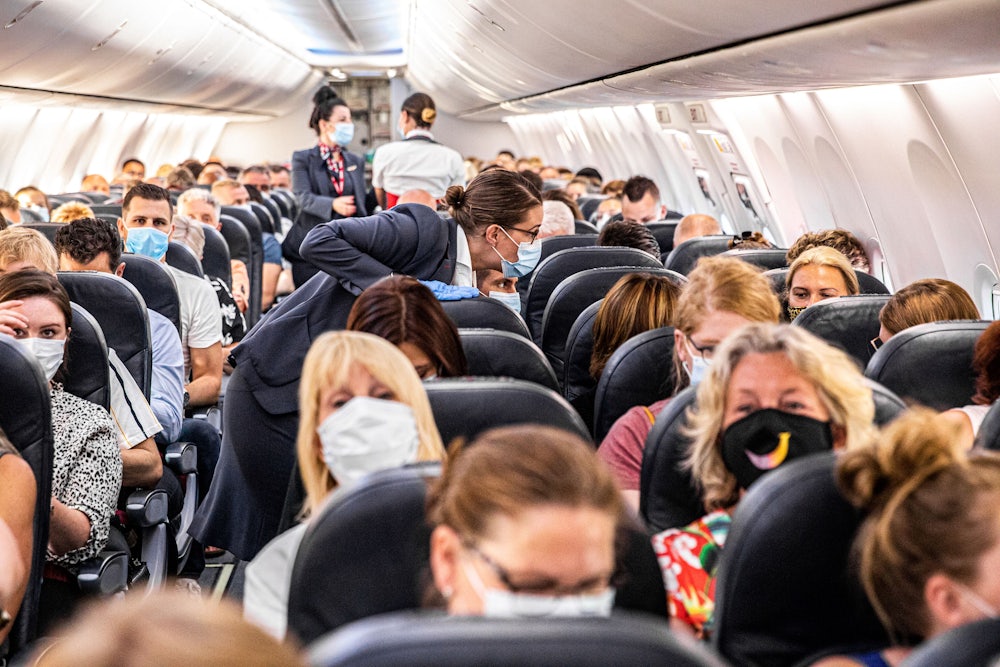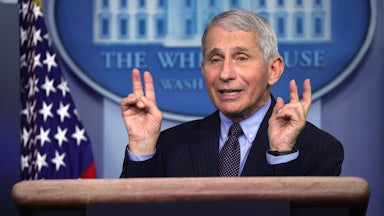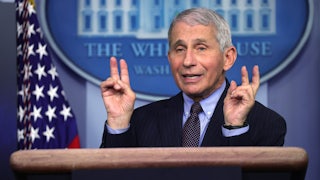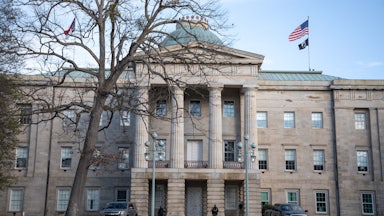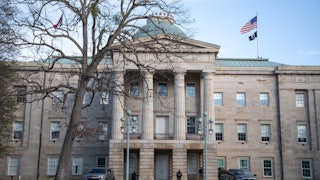Covid-19 cases across the United States have finally started dropping. People are venturing outside again to host barbecues and birthday parties. This week, both New York and California officially lifted restrictions that have been in place since last year to help defend against Covid-19. It feels like the worst of the pandemic could be behind us.
If this all sounds familiar, it’s because something similar happened last year. In early summer, cases fell dramatically, and they stayed low in some states. But they soon shot up across the Sun Belt, where 35,000 people died last summer alone, and then the virus exploded across the country in the fall and winter.
The enormous difference from last year is that we now have incredibly safe, effective vaccines. But in areas across the country with persistently low vaccination rates, we could see a repeat of last summer’s unexpected surge. And this year, we have the much more transmissible delta variant to reckon with. The pandemic isn’t over: Worldwide, it has already killed more people in 2021 than it did in all of 2020. The safety gap between the vaccinated and the unvaccinated is widening.
With normal life finally calling, patience for listening to scientific Cassandras is at an all-time low. But some experts are now focusing on an alarming possibility: after a social summer, another autumnal spike in Covid cases.
Several teams of researchers, led by Dr. Justin Lessler, an associate professor of epidemiology at the Johns Hopkins Bloomberg School of Public Health, recently compared models of what might happen in the next few months with high and low rates of vaccinations and other precautions, like masking and physical distancing. What they found was sobering. If 83 percent of eligible Americans are vaccinated—the higher end of estimates from surveys—then virus cases in the fall barely rise in nearly all models studied. If we only reach 68 percent—the lower end—and we reinstate other public precautions like masks and distancing, we may see an uptick in the fall. But if we forget about those precautions in the scenario where only two-thirds of Americans are vaccinated, that uptick becomes a surge. (Currently, only around 52 percent of the eligible population, i.e., over age 12, is fully vaccinated.) If students and staff return to school, for instance, before children under 12 qualify for a vaccine and without putting precautions in place, “it could help drive a resurgence, particularly if we see any immune-escape variants,” Lessler told me. “Immune escape” happens when an evolving virus becomes more able to evade vaccines or the protection provided by previous illness.
What's next for #Covid-19 in the United States? @JustinLessler @johnshopkinssph and colleagues at the Scenario Modeling Hub looked at four possibilities.
— Joshua Sharfstein (@drJoshS) May 24, 2021
If vaccine coverage at just 68% and little distancing masking, then --> fall surge (bottom right). pic.twitter.com/lTfn61Ej3B
Vaccination wasn’t the only factor driving the drop in cases the U.S. saw this spring, Lessler told me. People also changed their behavior because they realized how risky the high caseload was—staying home more, masking or even double-masking. Cases began falling after a winter peak, but they plateaued for a while around 70,000 cases a day because, even as some people started to get the vaccine, others started to return to riskier behavior.
Another reason for the plateau in cases was more transmissible variants like the alpha variant—and now the delta variant threatens to slow the fall in cases, as well. Other countries, like India and the U.K., have already seen a marked increase in cases and hospitalizations as the delta variant took hold among unvaccinated people. It’s “a stark reminder that we may feel finished with Covid-19, but we’re truly not,” Dr. Saskia Popescu, an infection preventionist and assistant professor at George Mason University’s Schar School of Policy and Government, told me in an email.
People who live in places with significant gaps in access to vaccination will continue to suffer and die—entirely avoidable tragedies when effective vaccines are available. Some states, for example, have vaccinated more than half of their entire populations, while others are hovering around 30 percent—not enough to stop a rise in infections, which could in turn lead to not only more deaths but also new variants. Stagnating rates of daily shots and continued access issues across the U.S. and the world “are things we need to be focusing on right now, as the U.S. has a trend with Covid-19 of prematurely and rapidly trying to normalize to a pre-Covid life,” Popescu said.
According to an analysis by The Washington Post, Covid-19 cases are now rising in places with low vaccination rates—a change from just a week and a half ago, when vaccination rates and case rates didn’t seem to overlap much. At first look, the divide in the U.S. largely seems political. Biden won the top 21 states, plus D.C., with the highest vaccination rates, while Trump won 17 of the 18 states with the lowest vaccination rates. While white Republicans do have the highest rates of vaccine refusal, there is more at play than personal politics. Red states may not have invested as much in public health, including accessible vaccination sites and information campaigns to get everyone protected, raising significant access issues for those who are open to getting shots but haven’t yet.
The delta variant, first identified in India among its staggering crush of cases and deaths, is now soaring in the U.K. and taking hold in Europe. Delta represents about 10 percent of sequenced cases in the U.S., and it’s doubling every week or so. On Tuesday, the U.S. Centers for Disease Control and Prevention officially classified it a “variant of concern.” Early studies suggest that it’s about 40 percent more transmissible than the alpha (or B.1.1.7) variant, which was itself more contagious than the original virus. Those who have no immunity to the coronavirus have a much higher chance of catching the virus if they come into contact with it than they did last summer, when these variants weren’t around yet. In addition, some reports indicate the delta variant may make people sicker.
“If you’re not vaccinated: I’d be afraid. Maybe even very afraid,” Dr. Bob Wachter, chair of the University of California San Francisco’s Department of Medicine, tweeted on Sunday. In the past two weeks, he said, he’s become much more worried about how the rise of the delta variant this summer could lead to a surge this fall and winter across the country. “Delta should ring the alarm & spur action,” he added.
Fully vaccinated people are currently considered to be at low risk for getting extremely sick from the delta variant, according to a statement from Public Health England on Monday. But the vaccines work slightly less well against catching a milder case, and there are signs the variant might be good at evading less than perfect immunity—for example, a case in which someone’s immune system didn’t respond strongly to the vaccine due to age or a medical condition. Those with only one dose are significantly less protected from the virus; normally, a few weeks out from the first shot, people are 80 percent protected, but against the delta variant, that figure drops to around 33 percent.
Who knows what the next variant will bring? Variants like delta have emerged because the pandemic is still raging in communities without vaccines. Those fires will continue spreading, and gaining force, the longer they are allowed to burn.
Dr. William Hanage, an associate professor of epidemiology at the Harvard T.H. Chan School of Public Health, recommends in response to the delta variant that even vaccinated people start taking a few more precautions than they might have a week or two ago: wearing a mask indoors if they’re not sure about everyone’s vaccination status; spending more time at a distance and outdoors with friends if possible. “The future is brighter than at any stage in the past year, but we can make it brighter still by holding the virus back a while longer while we get vaccination rates as high as possible,” he wrote for The Washington Post.
Lessler said that if he’s with a group of friends who are all vaccinated, they’ll take their masks off. “But when I’m out in public still, even if I don’t have to, I wear my mask. Both to protect those around me, to make them more comfortable—I don’t know if someone is immunocompromised or at high risk—and also to protect myself, because the vaccine isn’t perfect.” Even if you’re wearing a Kevlar vest, as one researcher put it, it’s still better to be careful when there are plenty of bullets whizzing through the air.
“Ultimately, I think immunity—even if imperfect, even if not keeping the virus out altogether—will put us in a state where we are more or less living our lives as we did before,” Lessler said. But that depends on working hard to make vaccines available to everyone—stamping out chances for the virus to evolve—and changing policies as needed to keep new variants from getting out of control. If we can throw everything we have at this virus now, we have a much better chance of returning to that kind of life sooner.
“I don’t really think there’s going to be, you know, a single day when the pandemic ends,” Lessler said. “Things will get better and better.” But “if we start seeing either waning immunity or new variants that have escaped existing immunity, that’s the biggest thing that could still change [that] positive course.”
